The LEGO Lunar Research Base (set 60350) was inspired by NASA’s Artemis project which will return humans to the moon and develop a base camp at the lunar south pole. The Lunar Research Base is one of many space sets LEGO has released in recent years, but it is certainly not a one-trick pony or a reboot of previous ones. Containing 786 pieces, it will take a few hours to build the research base modules plus the lunar lander, moon buggy, rover, and skycrane drone. The set also comes with a really cool geode boulder and six astronaut minifigures. Everything about this set appeared to be exceptionally photo-worthy from the start, and I was super excited to fully explore it and see if it held up to my expectations.
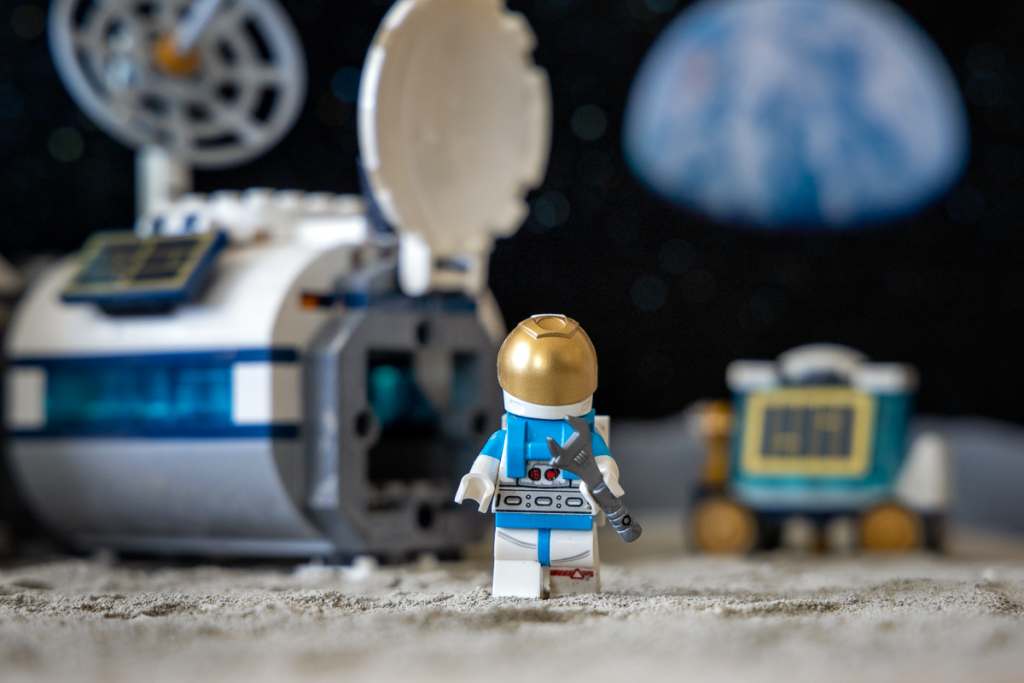
The Base
The Lunar Research Base consists of a central garage and domed botany laboratory section, a science laboratory module, and an airlock/docking tunnel module. The exterior has lots of details which make it a stellar background for photos.
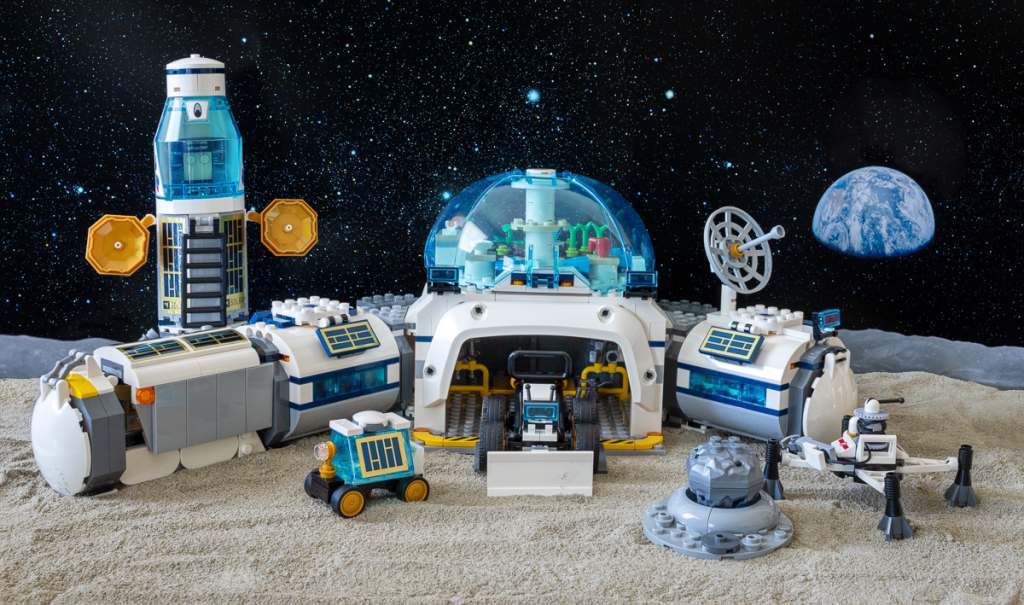
The Team
I was eager to meet the minifig team, and was happy to see the variety provided in this set. Three male and three female astronauts are included. Four of the six minifigures have both helmets and hair pieces, and they all sport the LEGO classic space logo either on their colorful and detailed suits or on their backpacks. Definitely a thumbs up for toy photography opportunities with this team.
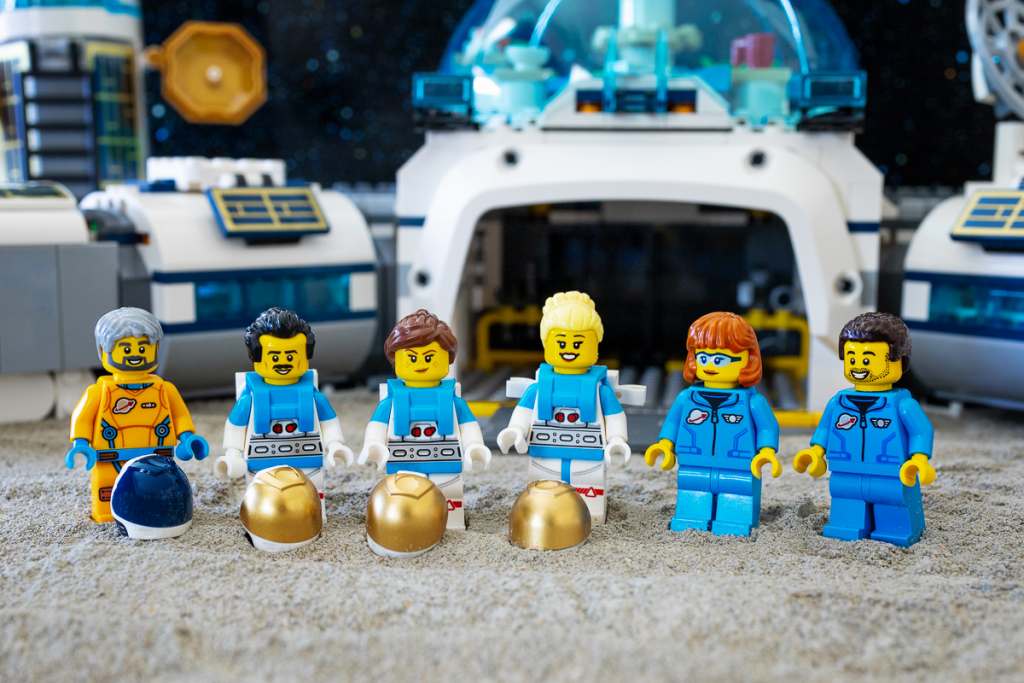
The Moon Buggy
The spiffy little moon buggy is equipped with a plow blade and looks like a small bulldozer. When not at work, it fits perfectly in the ground-level garage, which also contains a full set of mechanic tools.
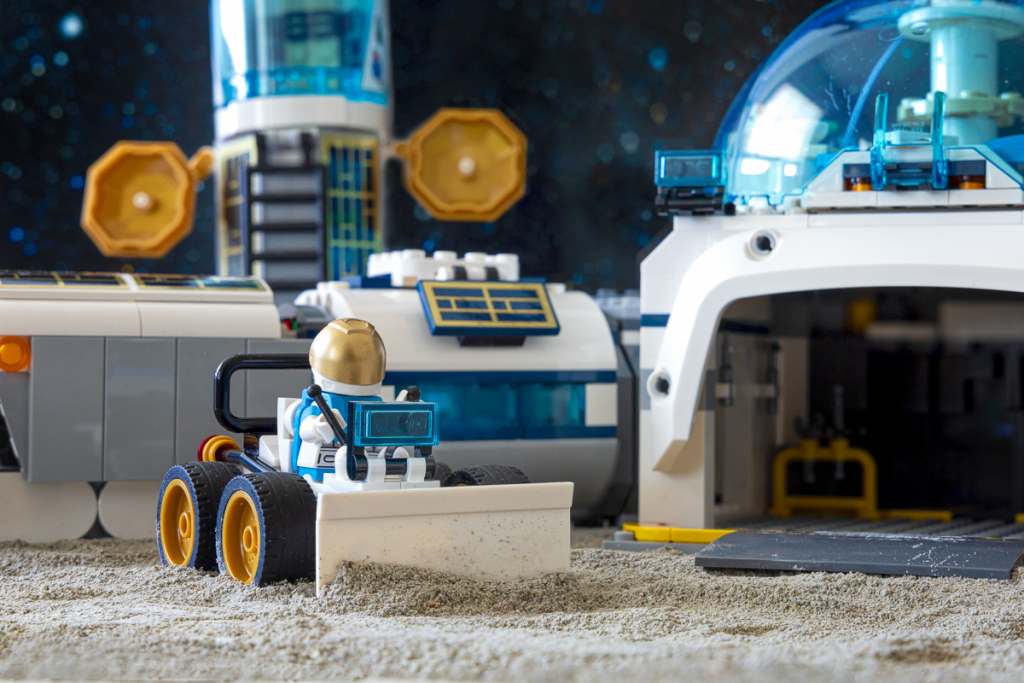
The Rover
This is no ordinary rover build. It’s based on NASA’s VIPER (Volatiles Investigating Polar Exploration Rover), which will be deployed to collect lunar surface samples and provide water and metal resource availability information. It has a fairly simple design, but the cute little LEGO rover is one of my favorite parts of the set. I can’t wait to see the real VIPER in action once the Artemis missions are in full swing.
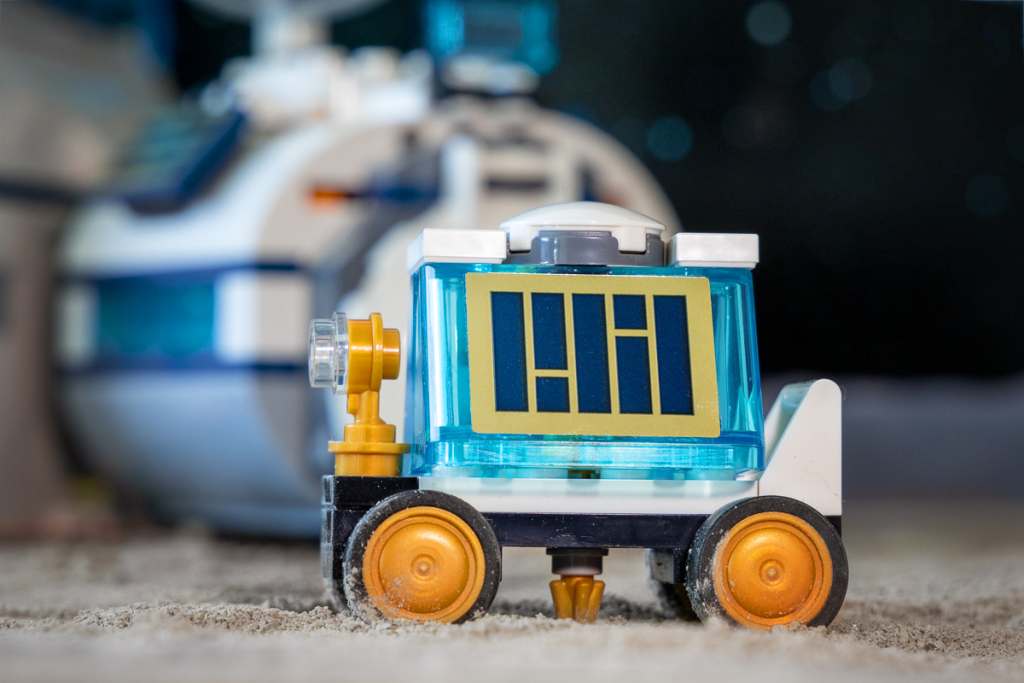
The Skycrane Drone
The skycrane drone is nicely detailed and has both a hook and a grappling claw. It also has working rope winch (although my perfectionist self was not happy to learn that the rope doesn’t wind evenly and the claw/hook doesn’t hang in the center below the drone). I had several photo ideas for the drone, and I am sure it will find its way into other scenarios as well.
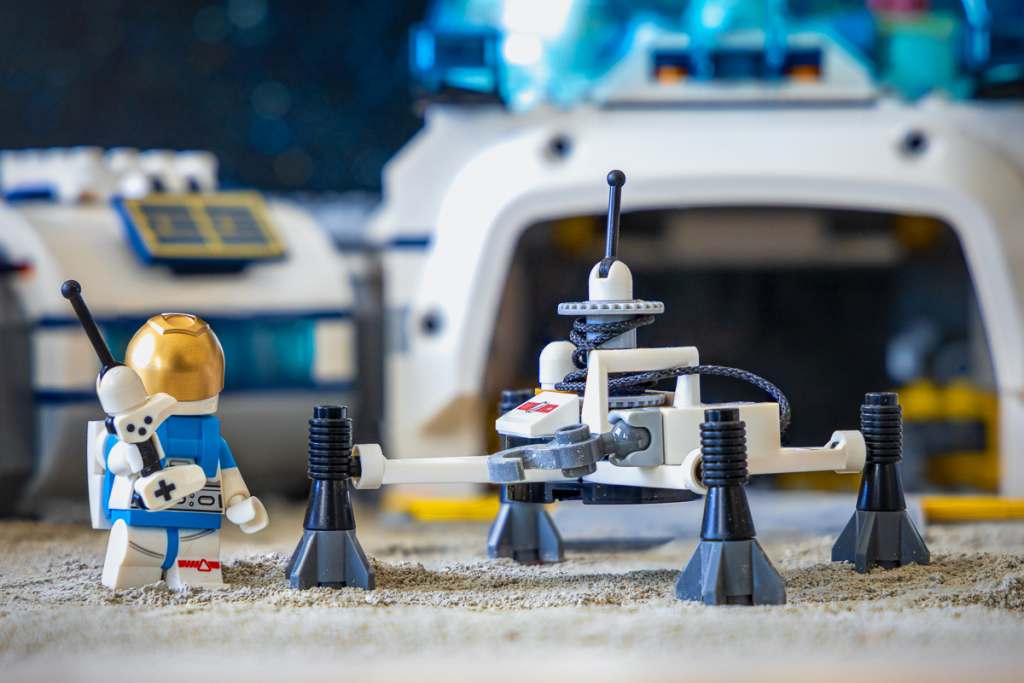
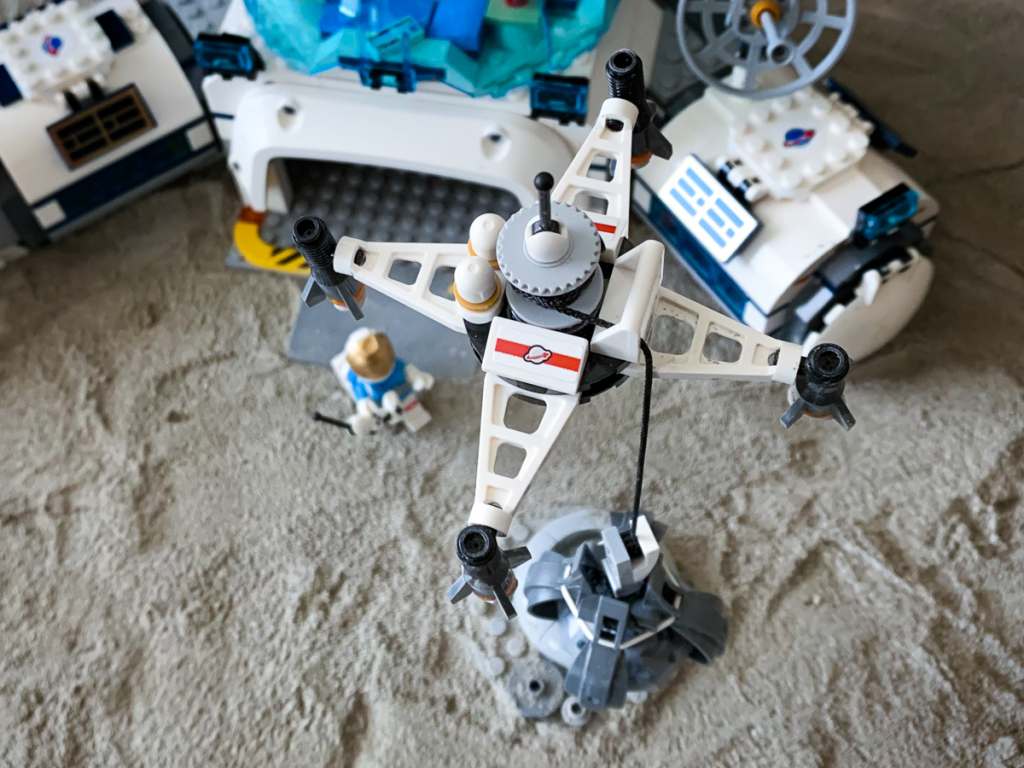
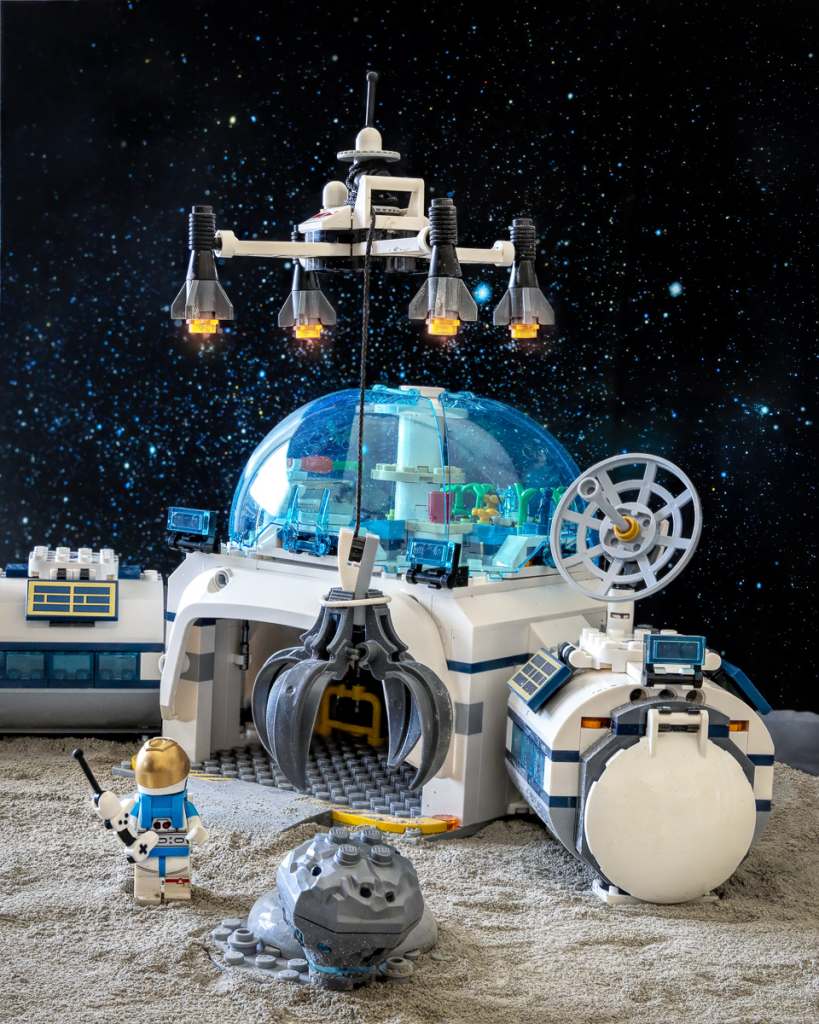
The Lunar Lander
The lunar lander is based on the NASA Artemis project human landing system (HLS). This LEGO version has a detachable capsule with plenty of room for one or two minifigure crew members. Though I struggled a bit getting it to sit level (lots of leg adjustments!) and the solar panel stickers are quite reflective, the lunar lander is a great build and photographs really well.
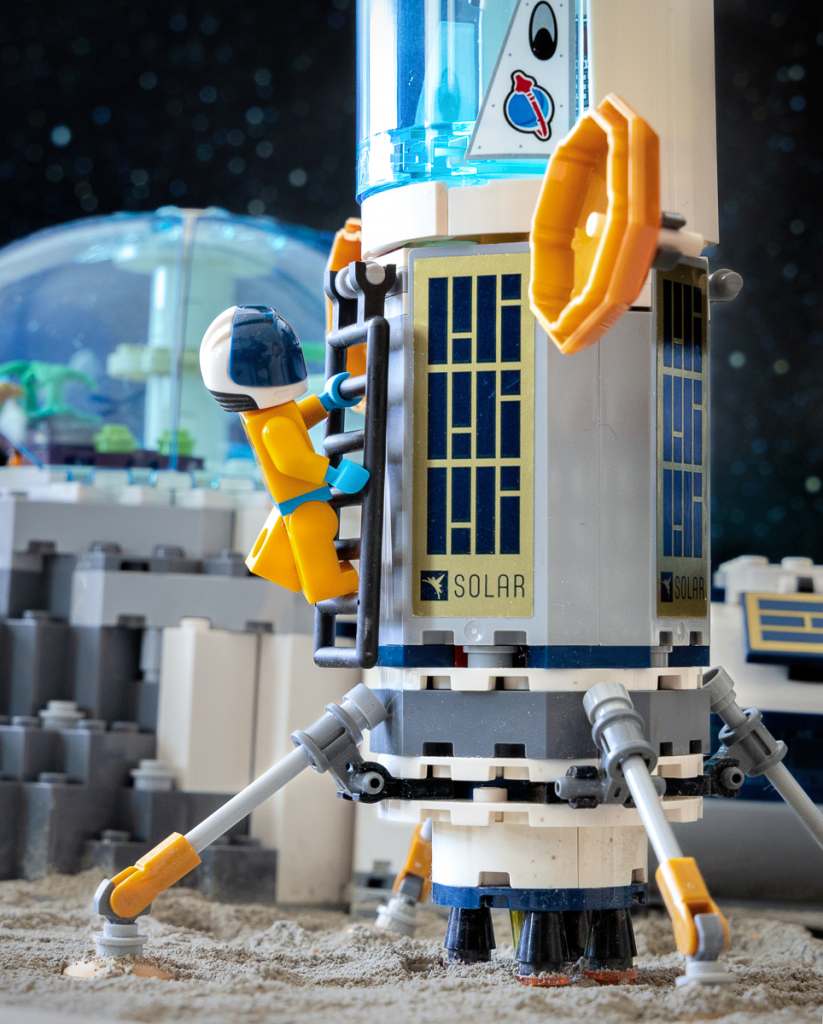
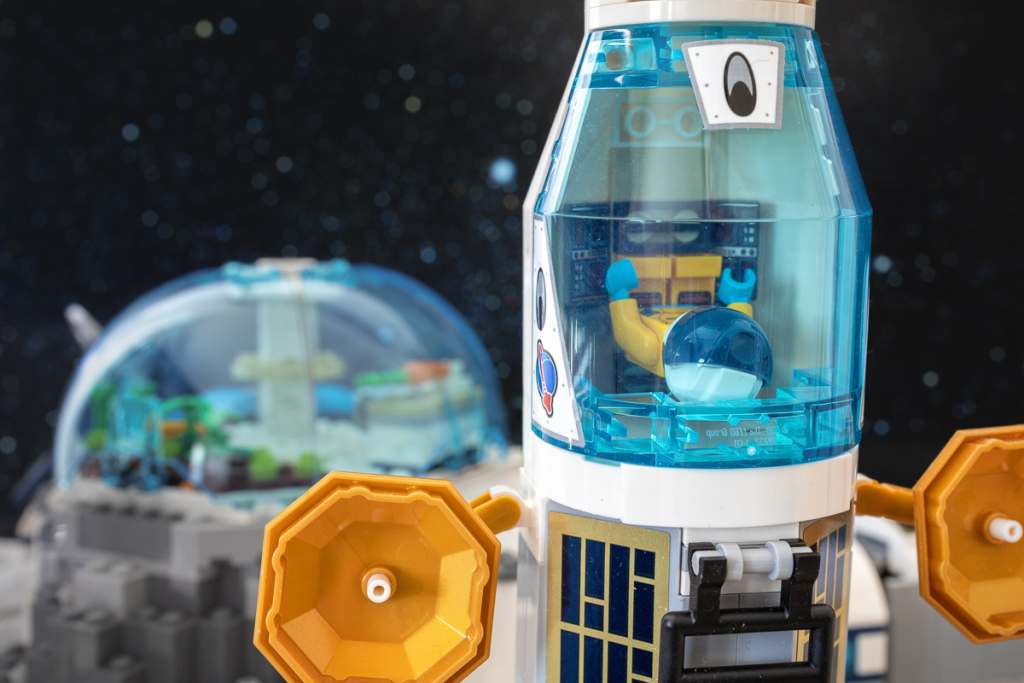
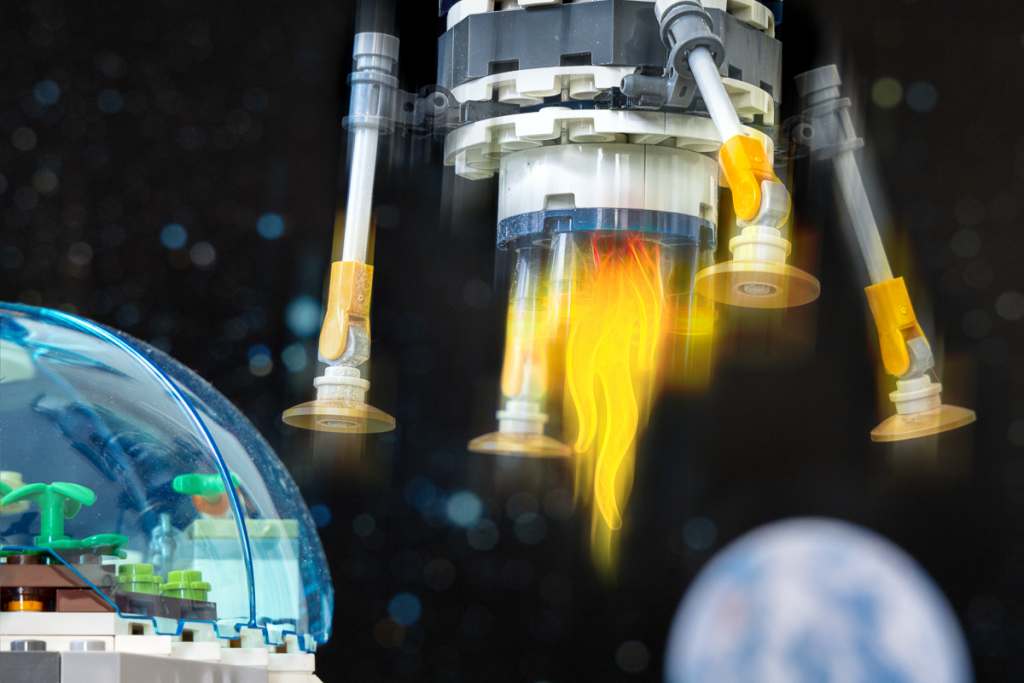
The Botany Lab
The domed botany lab is the centerpiece of the set. It features a garden and space for two minifigures to rest. While the dome is transparent, it is very reflective and I ended up lowering one of the hinged domed panels to take my photo.
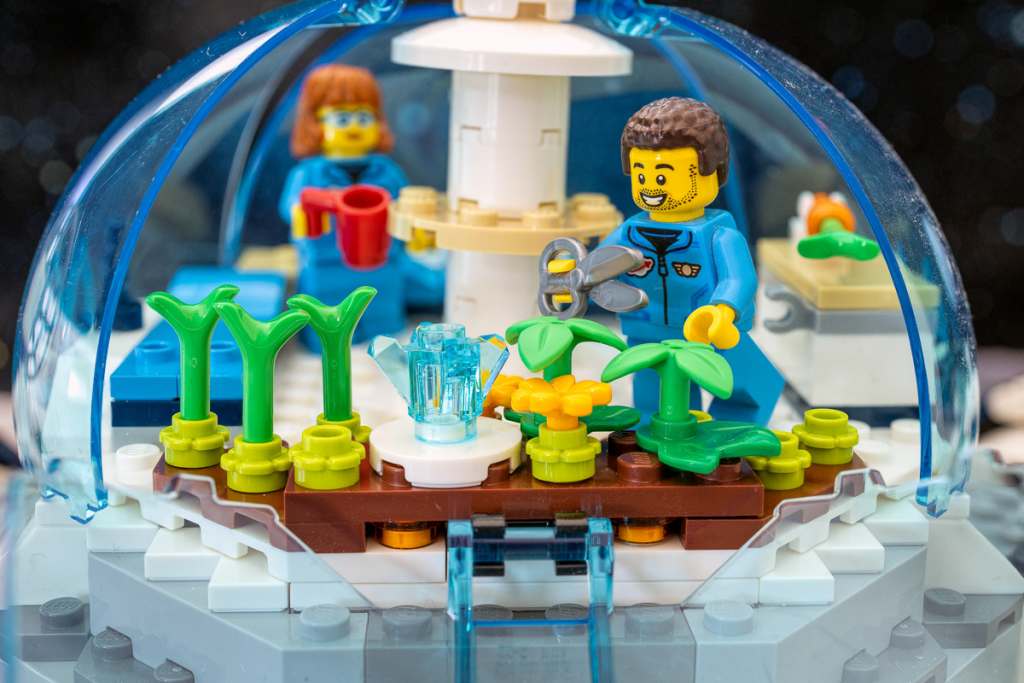
The back of the center section is made of rock wall pieces, adding detail and interest, and making it look like the lab is built into the moon’s surface. Very cool, and very useful for photos.
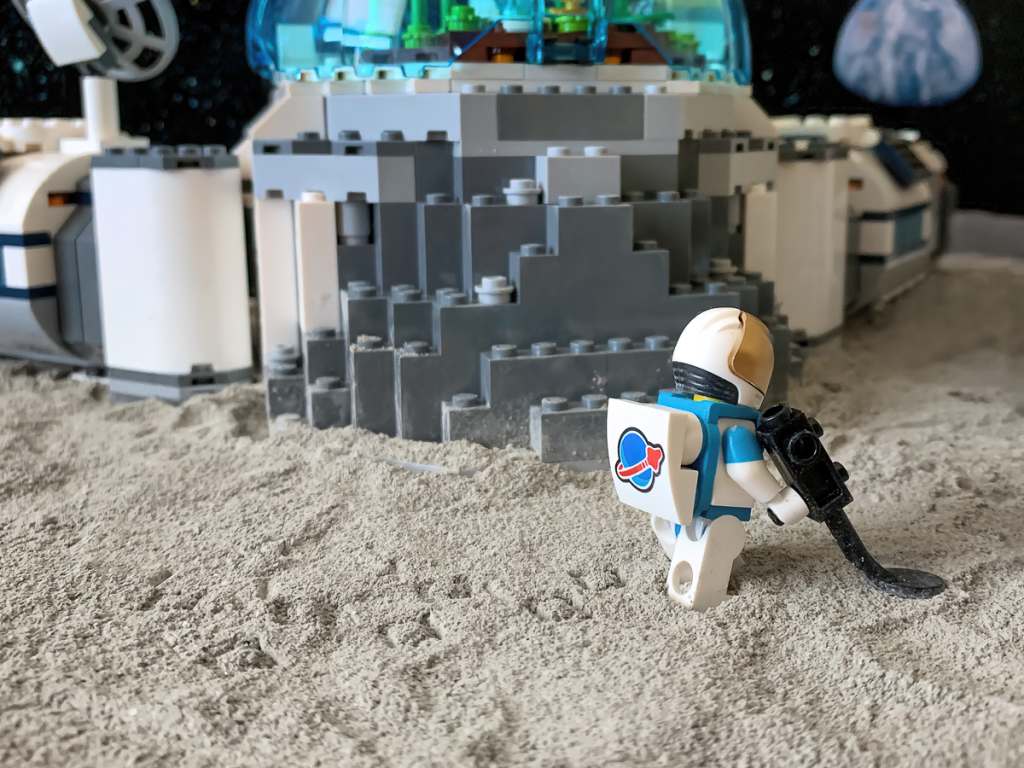
The Side Modules
The side modules are solid builds and add to the overall interest of the set. But they are tiny and a bit of a challenge when photographing their interior spaces. The science lab in particular is quite nice with its benchtop microscope and petri dish culture setup, but you have to take off the roof to access it for photos.
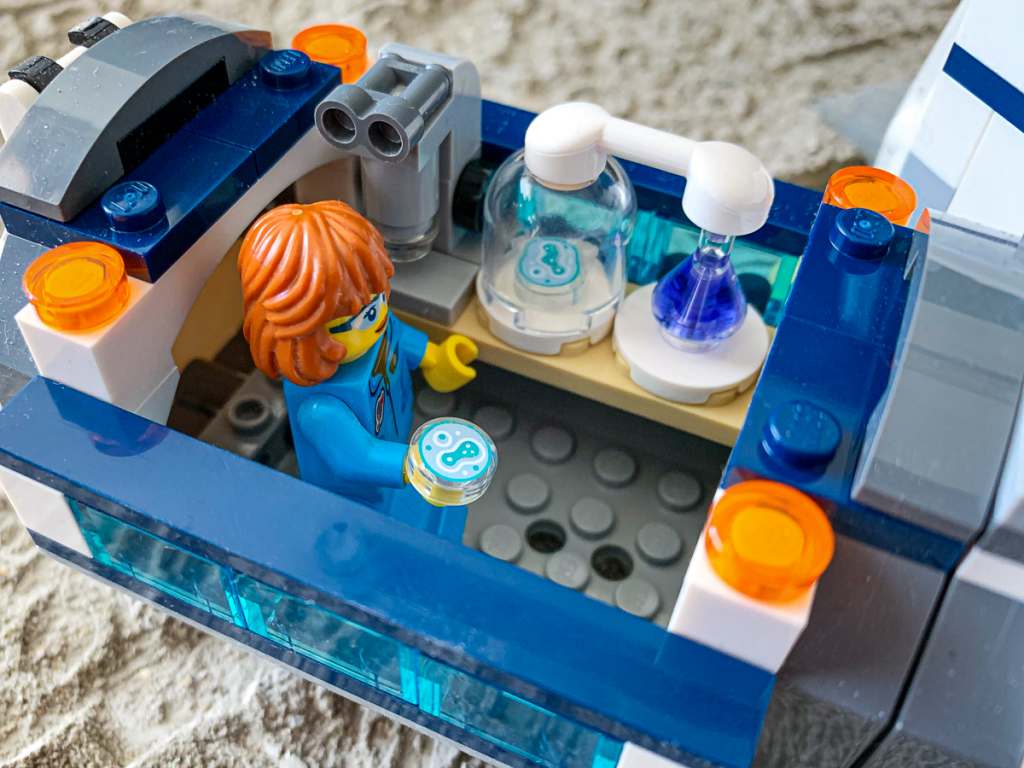
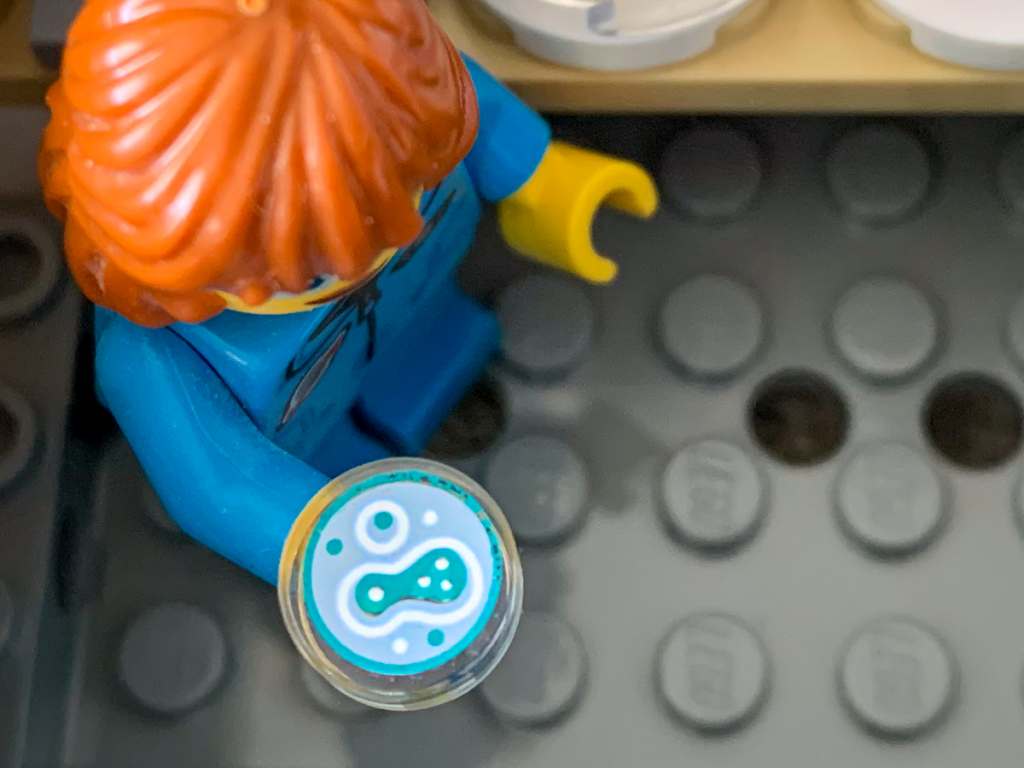
The other side modules include an airlock room and a docking tunnel. Like the science lab, the interior of the airlock room can only accessed by (easily) removing the roof.
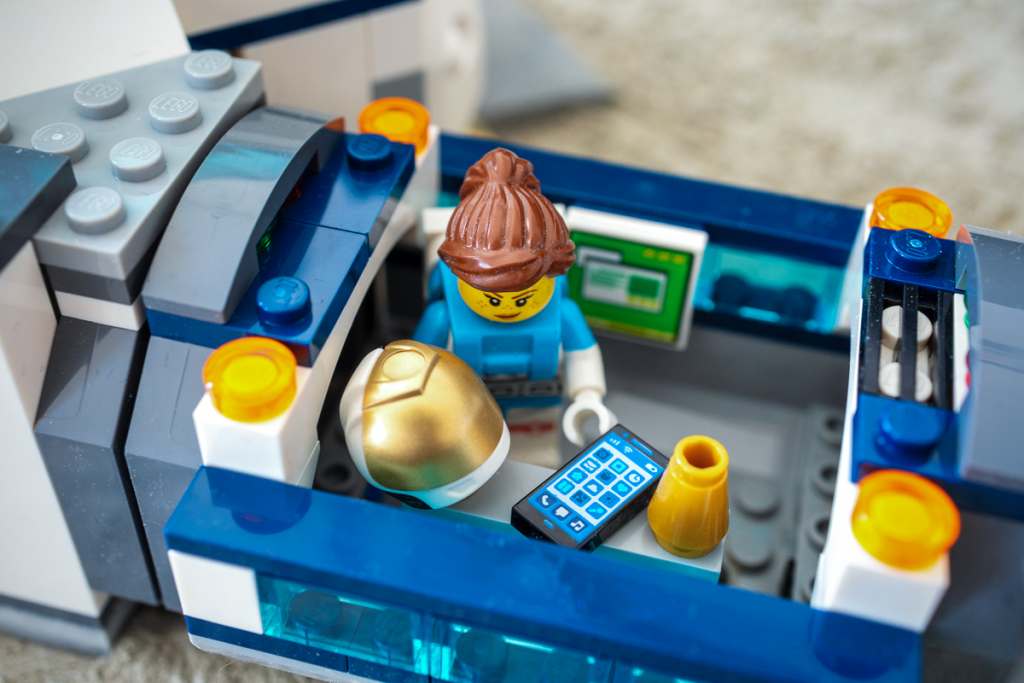
The docking tunnel is a clever build which raises up to function as a jet bridge to accommodate the LEGO Lunar Roving Vehicle (set 60348). The inside of the tunnel is rather plain for photos and is too small to accommodate the minifigures anyway. The better photo opportunities with this component are from the outside.
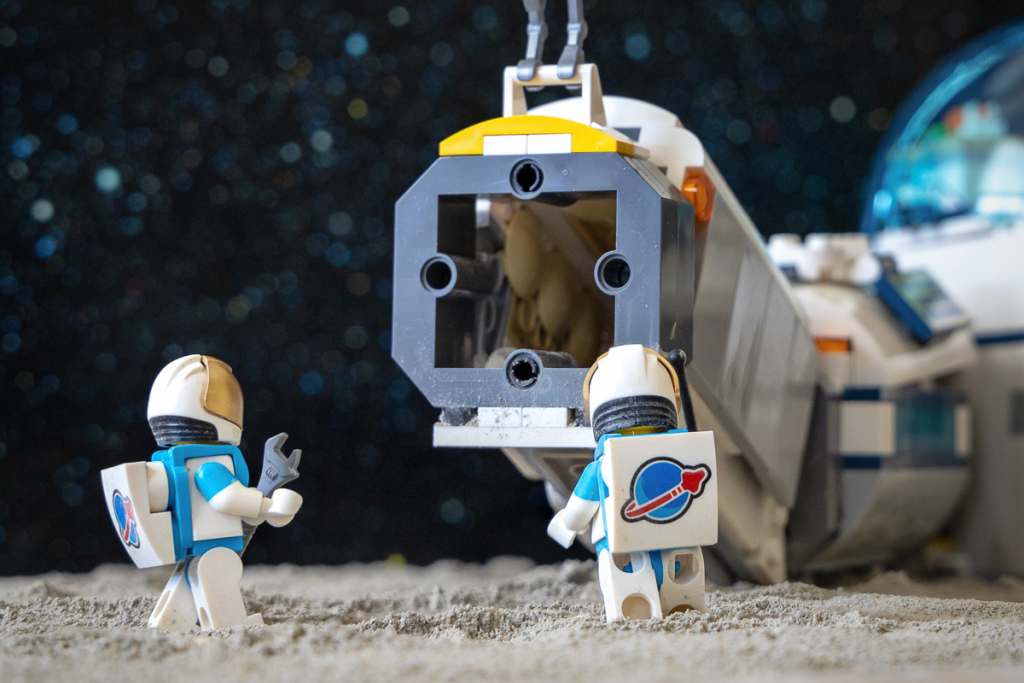
The Boulder
A welcome part of this set was the geode boulder. It’s stunning and photographs beautifully. I’ll find lots of uses for this piece, and not just in space-themed setups.
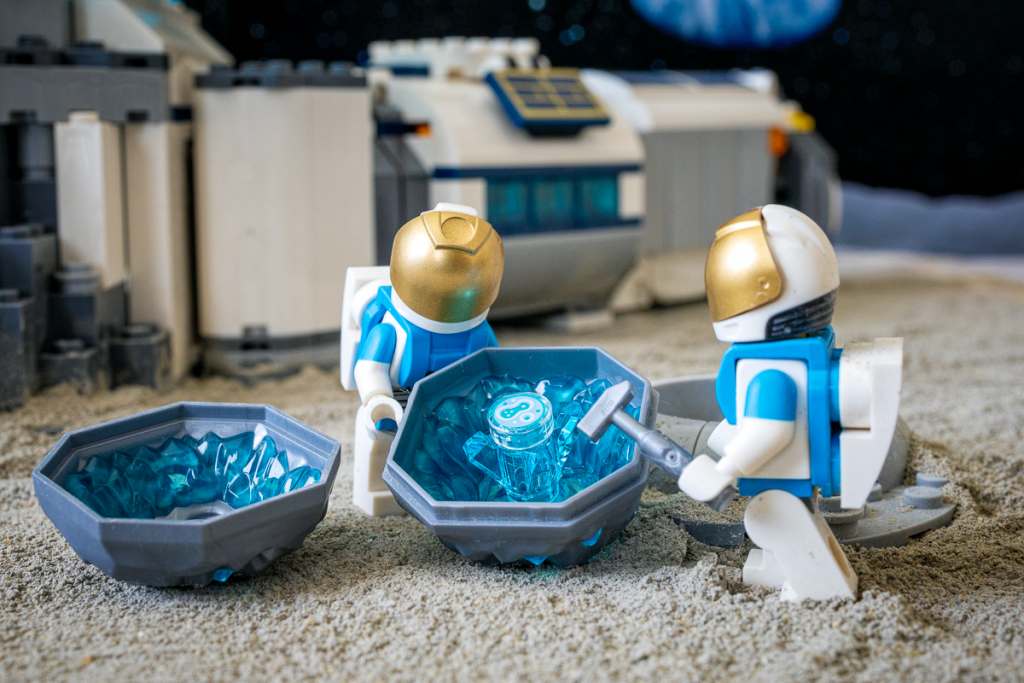
Summary
LEGO space was one of the earliest LEGO themes, first introduced in 1978, and it has been a favorite among fans of every age (including toy photographers!) since then. The Lunar Research Base set (60350) is a very worthy addition to the space theme, and is just awesome. It’s fun to build, has lots of interesting components and plenty of toy photo opportunities that make it an all-around success. This set can easily be combined with other sets to create more stories. I see lots of possibilities to use the lunar research base set in the future, especially as the NASA Artemis program progresses. And it will undoubtedly also be the setting for many mashup photo setups. Benny came for a quick visit and wholeheartedly agreed.
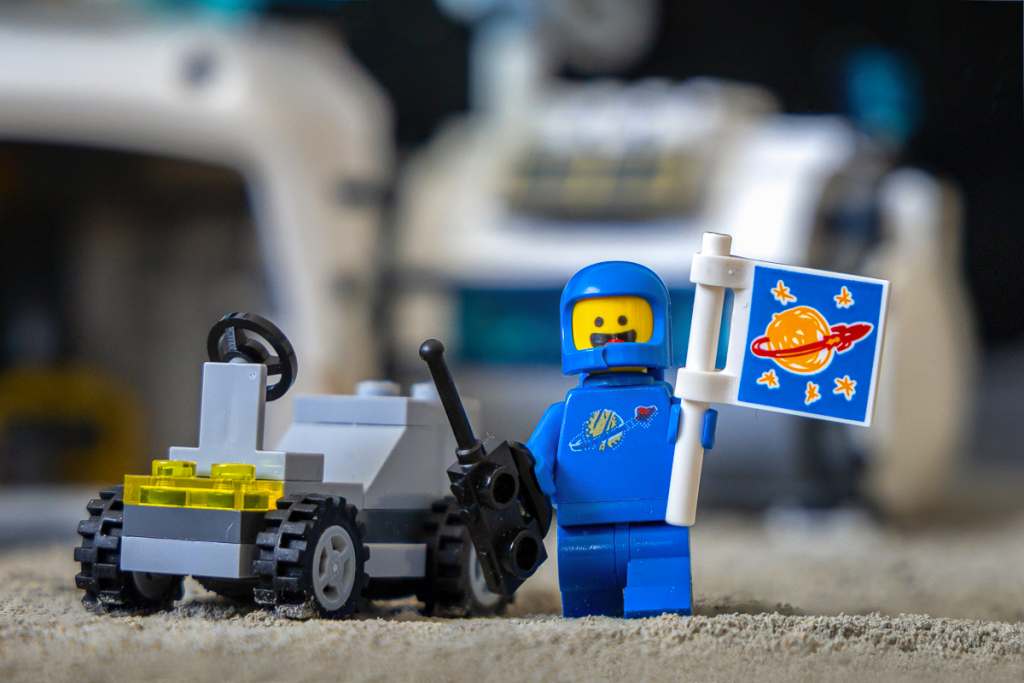
Thank you to the LEGO Group for providing this set for review.


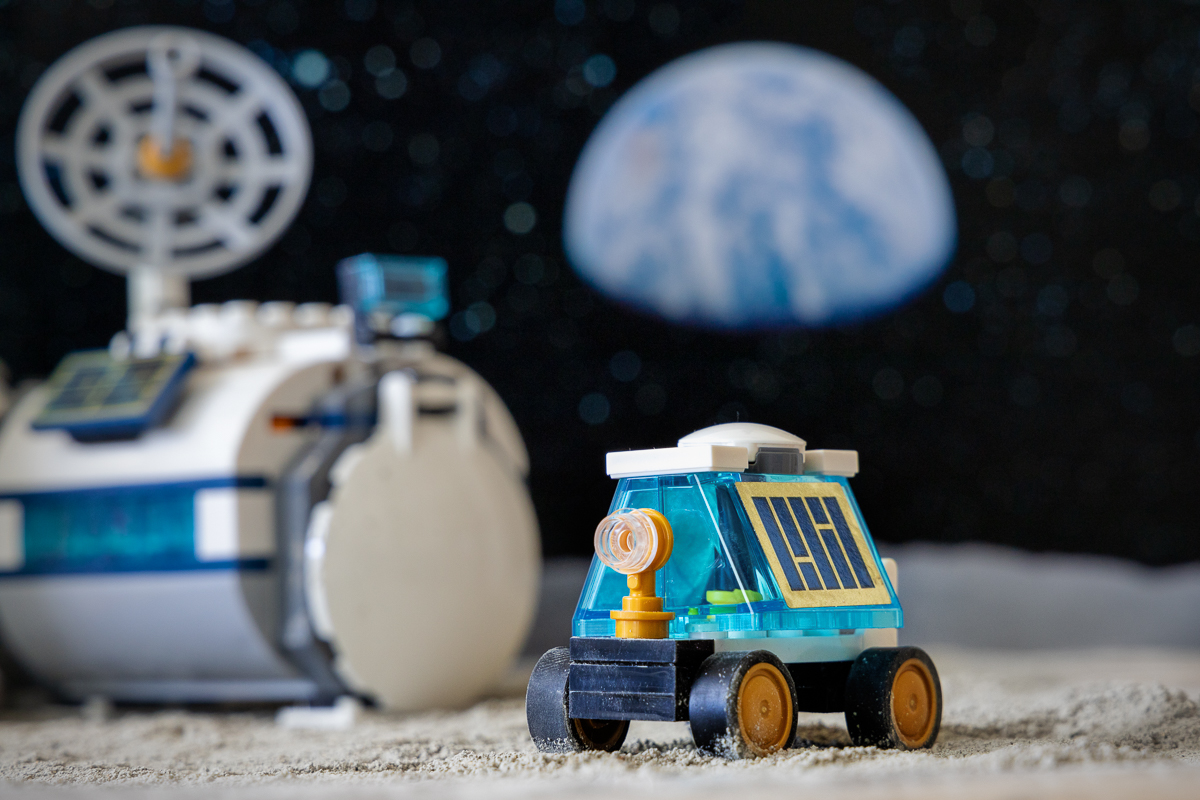
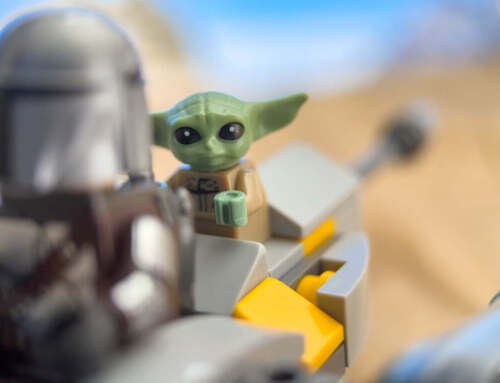
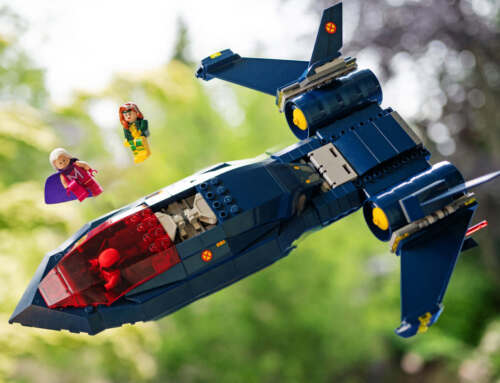
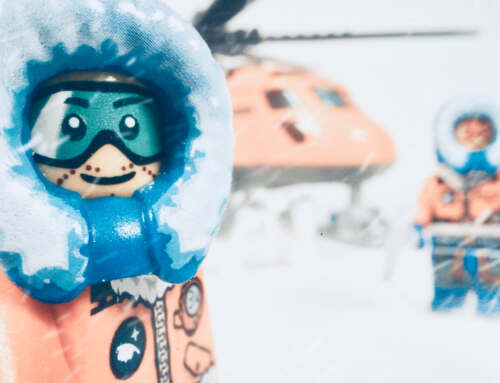
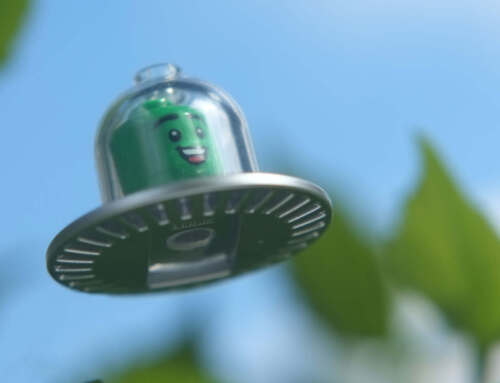
Looks like a great set full of possibilities! Fun review, Chellie!
I’m a fan of everything lego space and this set looks fantastic! Thank you for a great review and so many closeup detail shots.